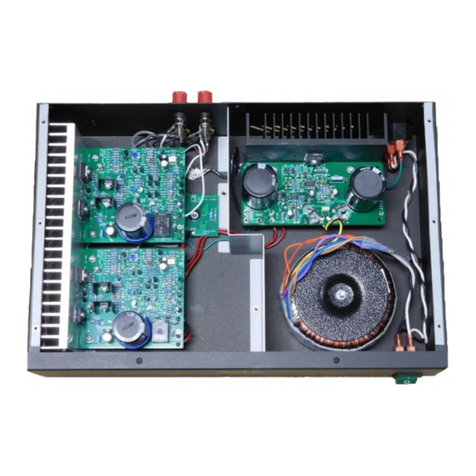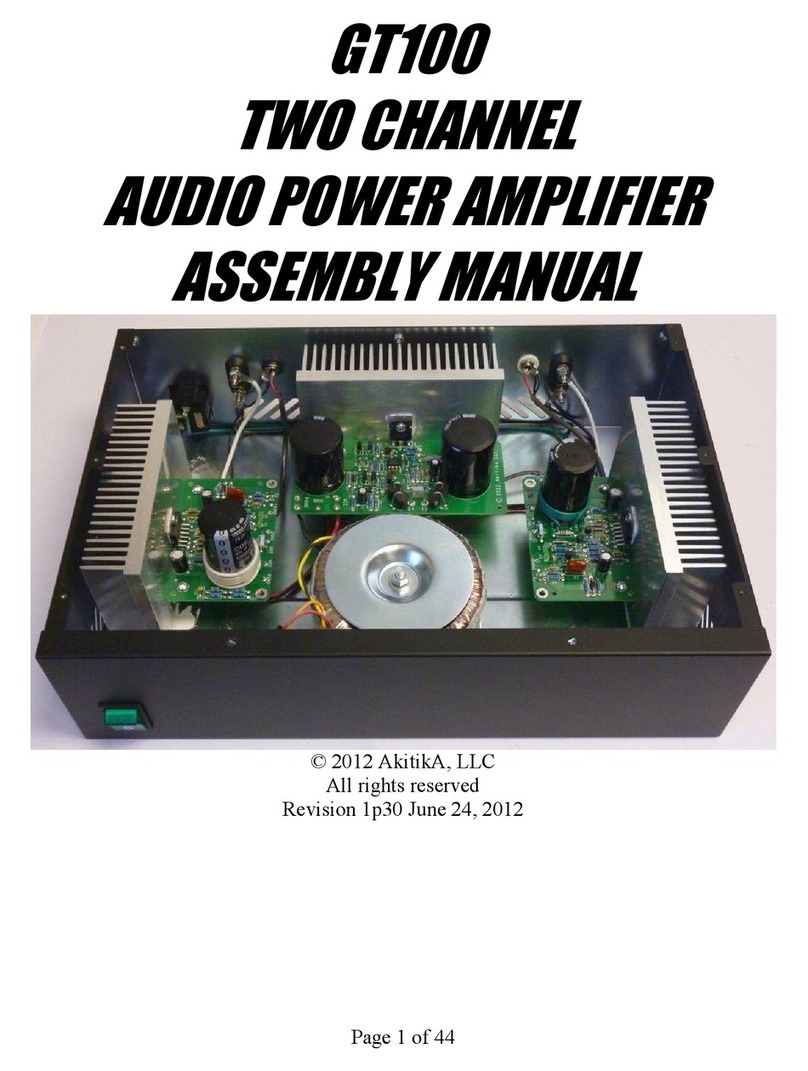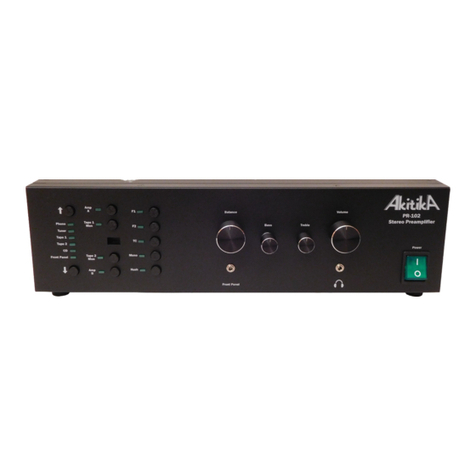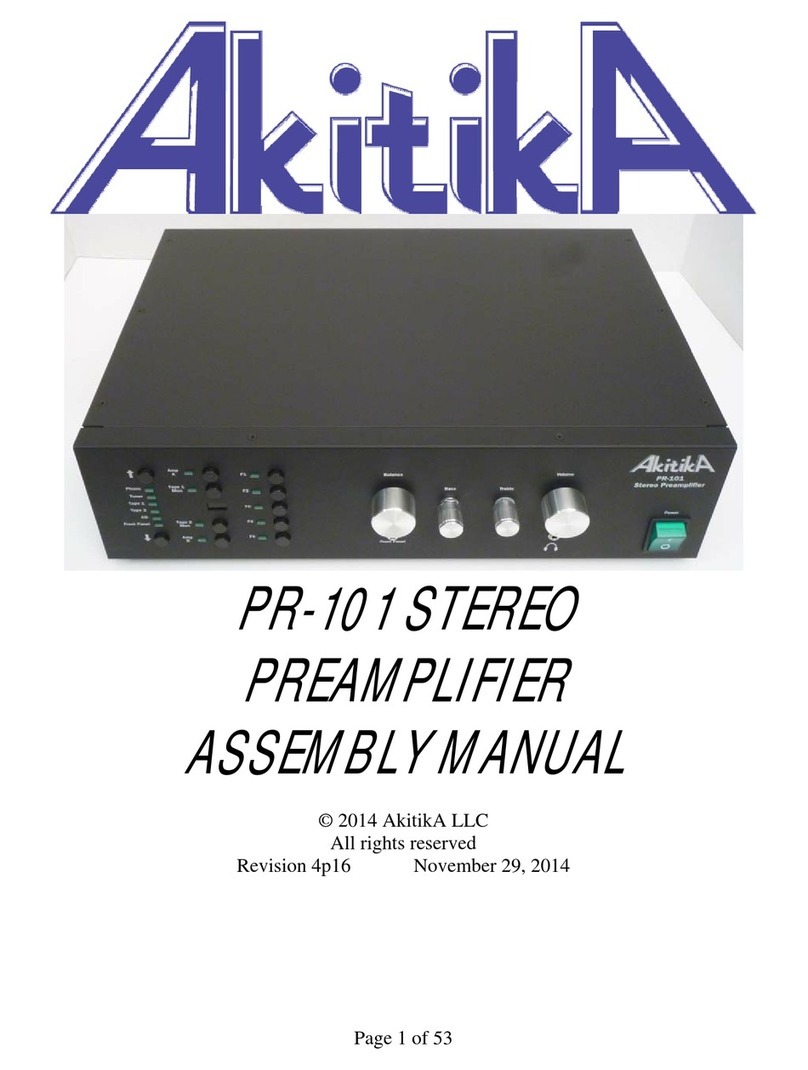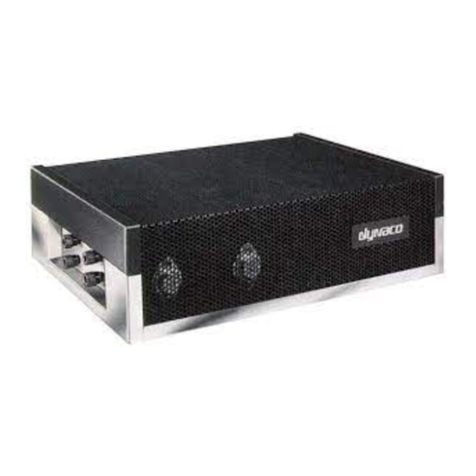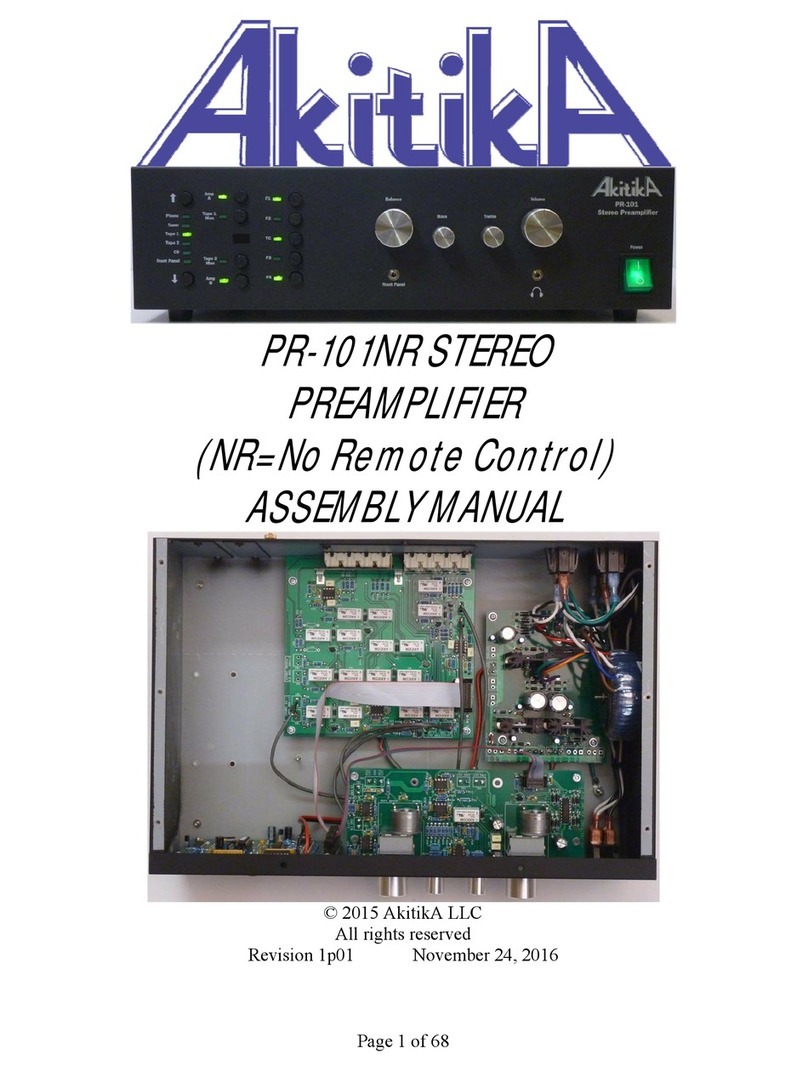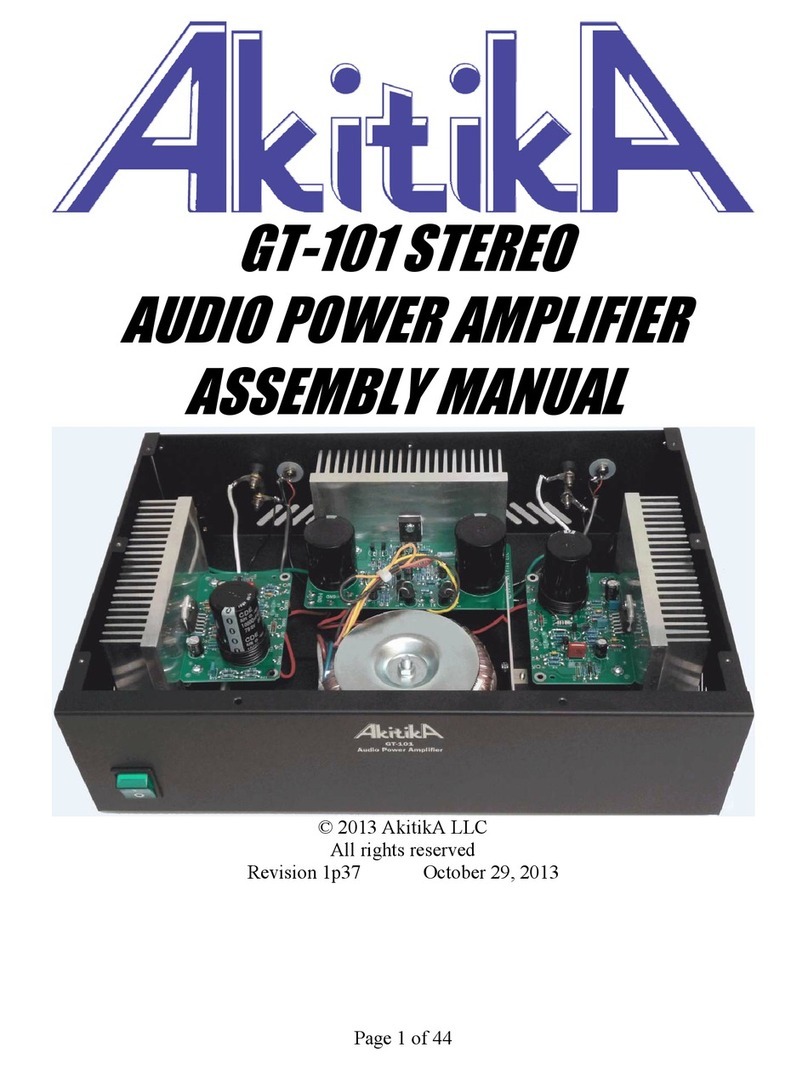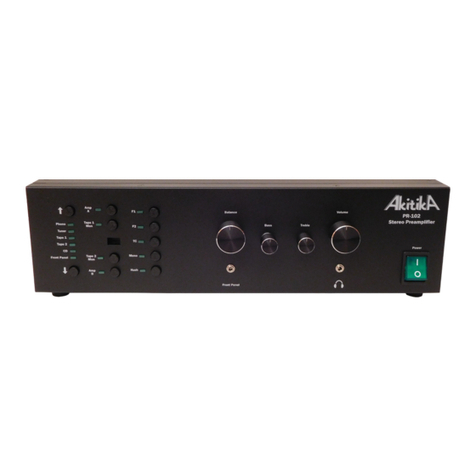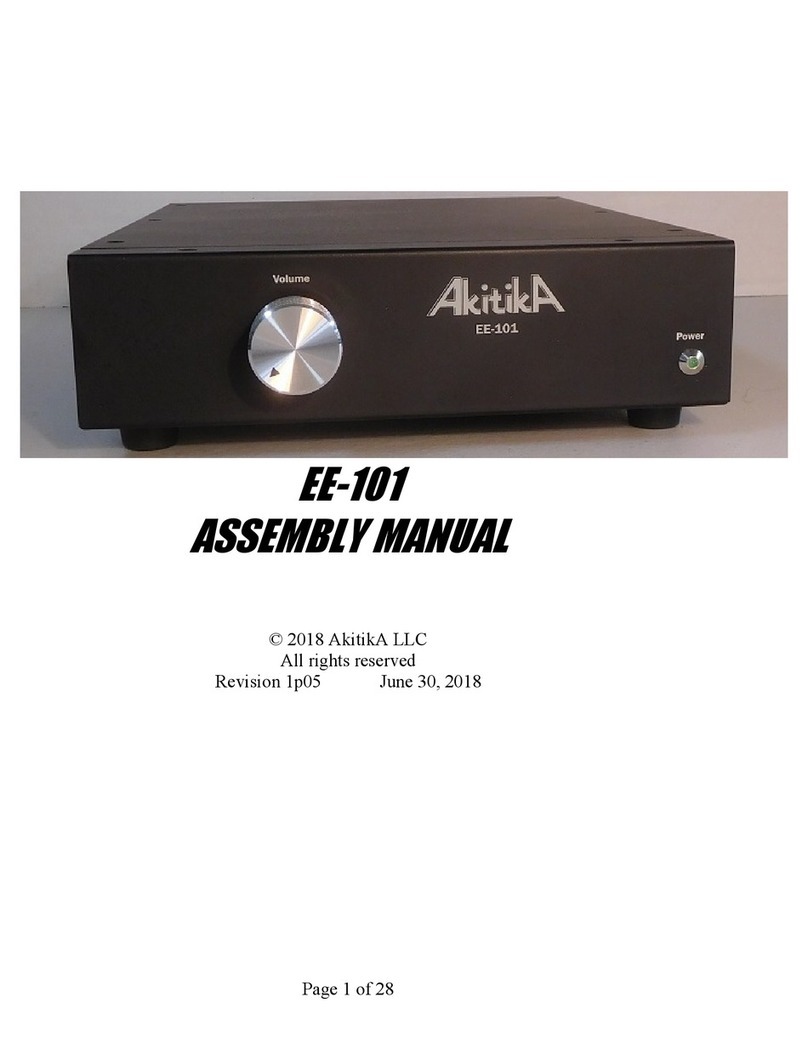
Page 3 of 9
Section 1: About This Manual
This manual is about the VC102 Kit. The VC102 Kit supplies the parts you need to
install a volume control into the GT-102 Stereo Power Amplifier. This manual gives the
information you need to:
Drill the chassis to accept the volume control and
Wire in the volume control.
Tools and Supplies You’ll Need
You’ll need the following tools and supplies:
1. Phillips screw driver
2. Masking tape, duct tape, and electrical tape
3. A drill, and various drill bits (5/16” and some smaller bits to start the hole)
4. needle nose pliers, wire cutters, and strippers
5. pencil type soldering iron of 25 to 50 Watts and 60/40 rosin core solder
6. a utility knife to help prepare the shielded cable
7. Magnifying glass, if you’re over 42!
By purchasing, using, or assembling this kit, you have agreed to hold AkitikA, LLC
harmless for any injuries you may receive in its assembly and/or use. To prevent injuries:
Wear safety glasses when soldering to prevent eye injuries.
Always unplug the power before working on the amplifier.
Large capacitors hold lots of energy for a long time. Before you put your hands
into the amplifier:
o Pull the AC plug!
o Wait 1 full minute for the capacitors to discharge!
Remove jewelry and rings from your hands and wrists, or anything that might
dangle into the amplifier.
If working in the amplifier, keep one hand in your pocket, especially if you’re
near the power supply or power supply wires. This can prevent serious shocks.
Build with a buddy nearby. If you’ve ignored all the previous advice, they can
dial 911 or get you to the hospital.
Before You Begin
Remove the AC power cord from the IEC power connector on the GT-102 and from the
wall outlet. Disconnect the GT-102 from your sound system. Allow the capacitors in the
amplifier one full minute to discharge before beginning installation.
After the minute has elapsed, remove the 11 Phillips head screws that hold the cover in
place and put them in a safe place. Remove the cover and set it aside in a safe place.
